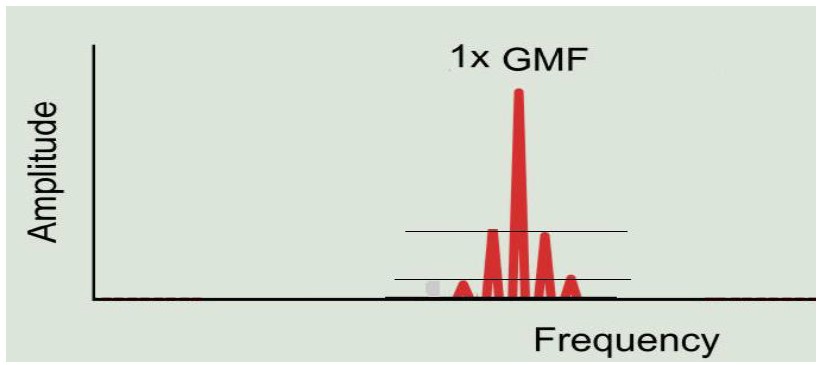Gears
All gears form a frequency component referred to as gear engagement. The fundamental gear engagement frequency is equal to the number of gear teeth times the shaft rotation speed. In addition, all gears produce a series of sidebands or modulations that are visible on either side of the primary gear’s meshing frequency.
Normal profile
In a normal gear, each of the sidebands is spaced exactly 1X the rotational speed of the input shaft, and the entire gear mesh is symmetrical. Furthermore, the sidebands always occur in pairs, one below and one above the gear engagement frequency, and the amplitude of each pair is identical. If we split the gear mesh profile for a normal gear by drawing a vertical line through the actual mesh (ie number of teeth times input shaft revolutions), the two halves would be identical. Therefore, any deviation from a symmetrical profile indicates a problem with the transmission; however, care must be taken to ensure that the problem is internal to the gears and not caused by external influences. External misalignment, abnormal induced loads and a number of other external influences destroy the symmetry of the gear profile. A gearbox is a rotating device which can cause normal low frequency harmonics in the vibration spectrum, but can also show a lot of high frequency activity due to gear and bearing impacts.
The spectrum of any gearbox shows 1X and 2X along with the gear mesh frequency (GMF = gear mesh frequency).
The GMF will have speed sidebands relative to the speed of the shaft to which the gear is connected.
Gear spectra contain a range of frequencies due to the different GMFs and their harmonics.
All peaks are of low amplitude and are not no natural gear frequencies are excited if the gear is still in good condition. Sidebands around the GMF and its harmonics are quite common.
